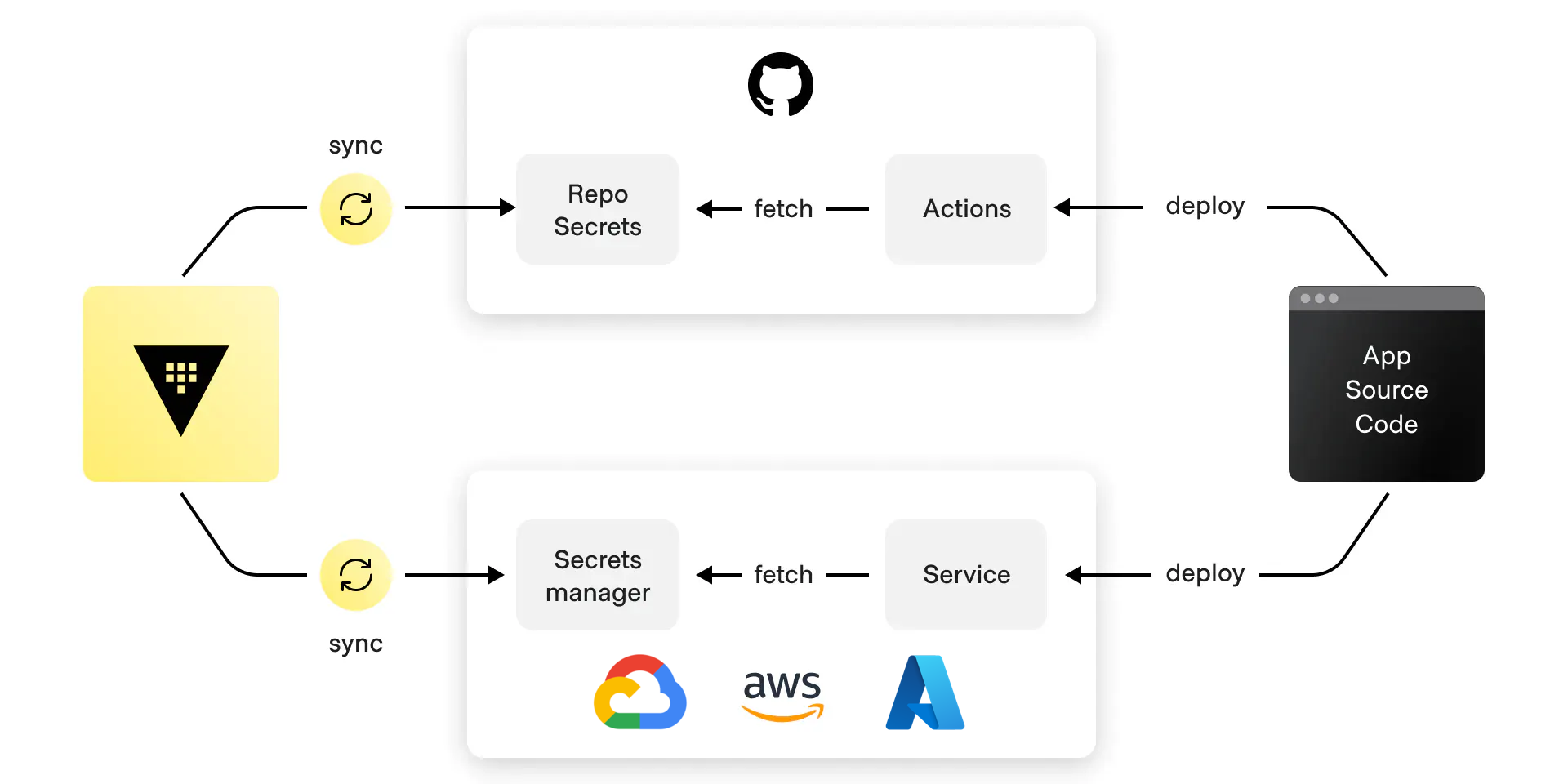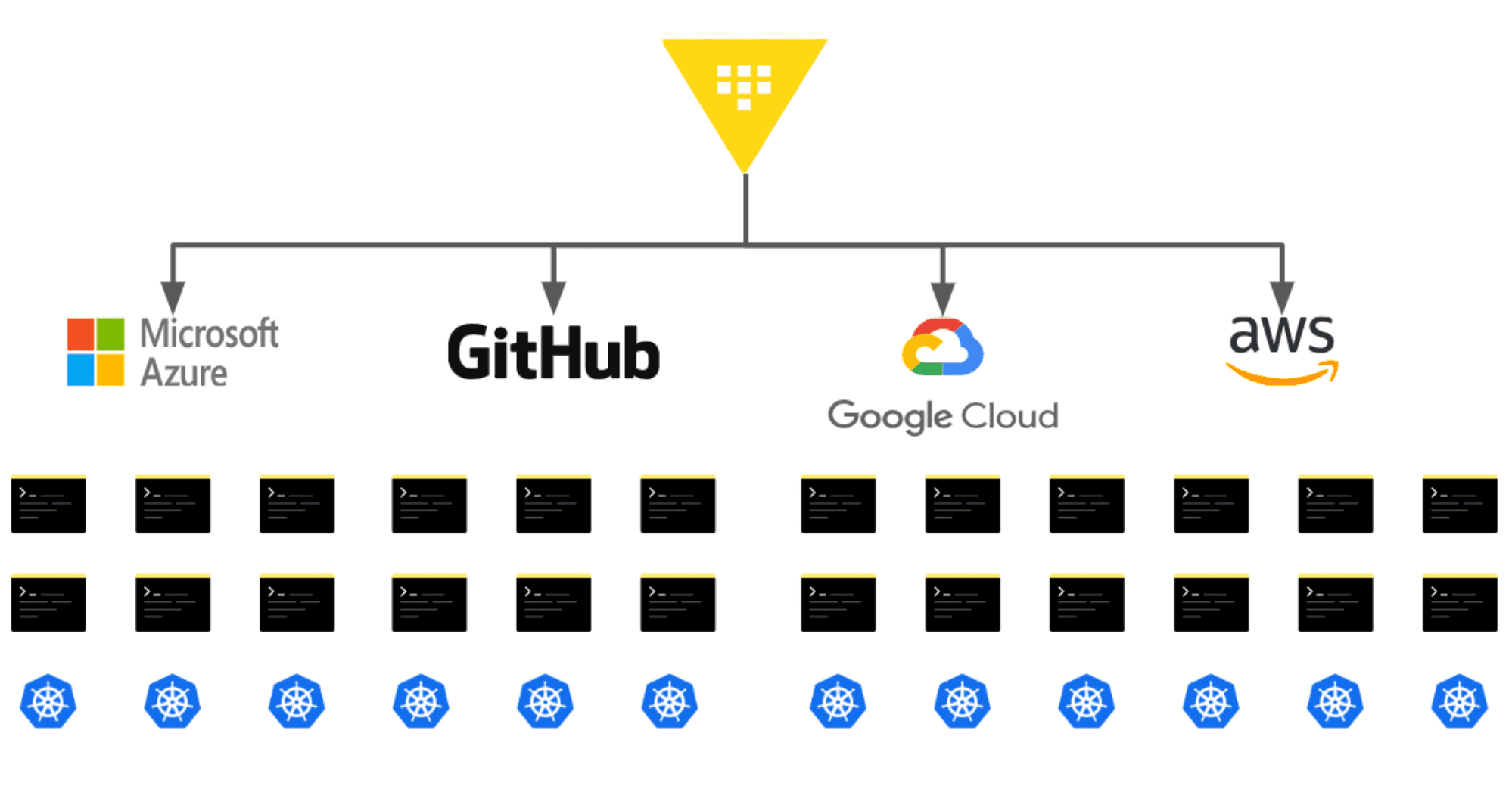Secrets sync, now generally available in Vault Enterprise 1.16, is a new feature that helps organizations manage secrets sprawl by centralizing the governance and control of secrets that are stored within other secret managers.
Shift-left trends have caused organizations to distribute their secrets to multiple secret managers, CI/CD tools, and platforms to bring them closer to the developer for easy usage. This proliferation of secrets’ storage locations complicates secrets management, limiting visibility , fostering inconsistent management, and compounding challenges with governance and compliance.
Secrets management doesn’t live up to its full potential unless it is centralized and managed on one platform. Secrets sync represents another step toward that vision by helping organizations resolve secrets-management fragmentation by providing a single management plane and controlling the distribution of secrets for last-mile usage.
In this post, we’ll dive deeper into how secrets sync works and its benefits.

Secrets sync workflow
»How does secrets sync work?
First, let’s look at a short demo of how secrets sync works:
Secrets sync lets users manage multiple external secrets managers, which are called destinations in Vault. Supported destinations include:

Secrets sync destinations
Engineering and security teams can generate, update, delete, rotate, and revoke secrets from Vault’s user interface, API, or CLI and have those changes synchronized to and from external secrets managers to be used by your cloud-hosted applications. Secrets sync lets organizations manage sync granularity by supporting secret access via paths and keys so organizations can remain consistent with their existing operations.
Additionally, secrets sync supports alternative authentication methods for organizations that don’t support or allow personal access tokens or long-lived credentials. Supported alternative authentication methods include:
- GitHub App for GitHub destinations
- Google Kubernetes Engine workload identity federation for Google Cloud destinations
- STS Assume Role for AWS destinations
»Benefits of secrets sync
As more and more organizations adopt a multi-cloud approach, they face challenges around isolated secrets management, compliance, and reporting tools, as well as protecting expanded attack surfaces. Isolated secrets management solutions are primarily concerned with unifying secrets across solutions that are specific to their own platform, which can’t provide a complete solution and therefore is not suitable for multi-cloud environments, secrets management complexities associated with secret sprawl, multi-cloud adoption, or large-scale SaaS usage. Benefits include:
- Maintain a centralized secrets management interface: Centralized secrets management is better secrets management. Instead of context switching between multiple cloud solutions and risking breaches via human error, secrets are all synced back to Vault to be managed and monitored there.
- Better governance: Give security and compliance stakeholders one solution to implement and govern security best practices, as well as monitor compliance. A single management plane makes governance teams more productive and makes their goals more achievable.
- Higher developer productivity: Syncing secrets to a single management plane also makes development teams more productive. There’s no longer a need to interface with one cloud vendor’s key manager when deploying to that cloud, and another key manager when working in another cloud.
- Central visibility of secrets activity across teams: Once they’re synced and centralized, Vault operators can audit in one place. Track when, by whom, and where secrets are modified or accessed with advanced filtering and storing capabilities.
- Last-mile secrets availability for developers: Centralize secrets in one solution while syncing secrets to existing platforms that may require use of the local cloud service provider’s secrets manager (e.g. AWS Secrets Manager, Azure Key Vault, etc.).
»How HashiCorp resolves secret sprawl
Resolving secrets sprawl requires a comprehensive approach governing people, processes, and technology. Secrets sync is a powerful tool to assist organizations management of secret sprawl. Secrets sync is supported on Vault Enterprise, as well as our multi-tenant SaaS solution, HCP Vault Dedicated
Additionally, HCP Vault Radar helps platform engineering and security teams reduce the risk of secret sprawl by detecting unmanaged, hard coded, and leaked secrets by scanning data sources regularly used by developers. When an unsecure secret is detected, Vault Radar supports multiple remediation workflows to secure the organization’s technology stacks.
To get started with HashiCorp Vault, visit the Vault product page. To learn more about what’s new in Vault Enterprise, go to the Vault Enterprise release page. Please contact us if you’d like to discuss your secrets management journey.









